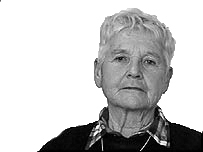Pat Arrowsmith was a force of nature. Among her many contributions to peace and justice, Pat took part in a nonviolent ‘interposition’ delegation to Indochina during the Vietnam War. The group tried to enter North Vietnam to share the dangers of bombing (they got to Cambodia and also protested at a US base in Thailand). This experience later inspired her to call together the Gulf Peace Team (GPT) in 1990, following the Iraqi invasion of Kuwait. The GPT brought 73 peace activists from 15 countries to camp at the Iraqi-Saudi border during the first 10 days of the US/UK/French assault on Iraq in January 1991.
The following tribute to her was written by Ezra Kingston and modified by Charlotte Hall. It appeared first on the Peace Museum website: www.peacemuseum.org.uk
On 29 September, it was announced that renowned peace activist and Campaign for Nuclear Disarmament (CND) co-founder Pat Arrowsmith had died at the age of 93. This tribute explores some of her extraordinary life and where she left a mark on our collection at the museum.
Pat Arrowsmith was born in 1930, and was raised in an upper-middle-class, religious family. By her own account, her family wasn’t particularly political, though she recalled that her mother was quietly anti-war throughout her life, and she would go on to support Pat’s peace campaigning later on.
After being expelled from one school, she was sent to Cheltenham Ladies College to finish her education, where she remembered getting in trouble for her own anti-war attitudes.
‘I think I probably acquired a sense of the importance of practicing what you preach from an early age.’ – Pat Arrowsmith, oral history interview with the London School of Economics
Pat was most known for her work campaigning for nuclear disarmament, and specifically for co-founding CND in the late ’50s. After leaving school, she studied at Cambridge university, which is where she first became involved in peace campaigning.
She became the field secretary for the Direct Action Committee against Nuclear War, which organised the first Aldermaston march in 1958. It was this march which helped to establish CND, which Pat was vice-president of until her death. A lot of her early work with the organisation was on the ground creating links with the trade union movement, as well as speaking to dock workers internationally.
As a result of her activism, Pat served 11 prison sentences, the first being in 1958.
In 1974, she was given 18 months in prison for handing out leaflets at a British army base, encouraging soldiers to refuse to serve in Northern Ireland. Amnesty International, an organisation for which she worked for 24 years, named Arrowsmith a ‘prisoner of conscience’, the first time they’d given out that title in Britain.
She wrote many of the poems from her numerous collections while in prison, reflecting not only on the threat of nuclear war, but on the prison system itself.
‘Pat has continually warned us of the dangers we’re in and the new dangers we’re creating… she emphasises how the human race threatens itself and nature too.’ – Adrian Mitchell, poet
As shown by her 1974 conviction, Pat did not only focus on anti-nuclear protest. After running for parliament unsuccessfully against the then prime minister, James Callaghan, in 1979, she used her platform to deliver a speech demanding that British troops withdraw from Northern Ireland. Pat was a vocal campaigner for the Troops Out Movement as well as other political movements.
There are a couple of places where Pat shows up in our collection at The Peace Museum, most notably in a beautiful portrait by Maggie Glover. It shows her with a CND symbol around her neck, holding a motorbike helmet.
We also have a DAC (Direct Action Committee against Nuclear War) placard which may have been used at Aldermaston marches in the late 1950s. It has Pat’s name written on it, along with that of Bertrand Russell.
Pat featured in our Peace OUT exhibition, as an example of how throughout time peace movements and LGBTQ+ rights struggles have crossed over. She is remembered by some as a lesbian icon of the early gay equality movement, particularly for her one-day marriage to a man in 1979 to fulfil the conditions of her father’s will around her inheritance. After annulling the marriage on the same day, she donated some of the money to lesbian magazine Sappho and to Gay Pride Week 1979.
Since her death, Pat has been remembered fondly by many she worked with, including Dr Kate Hudson, general secretary of CND, who wrote:
‘Pat had a remarkable insight into what action would make a real difference and she would pursue that vigorously, with every fibre of her being. She was as different from an armchair philosopher as it is possible to be. We will miss her very much.’


